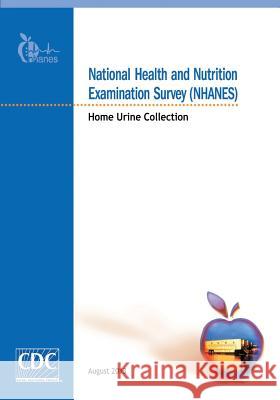National Health and Nutrition Examination Survey (NHANES): Home Urine Collection » książka
National Health and Nutrition Examination Survey (NHANES): Home Urine Collection
ISBN-13: 9781499256161 / Angielski / Miękka / 2014 / 102 str.
National Health and Nutrition Examination Survey (NHANES): Home Urine Collection
ISBN-13: 9781499256161 / Angielski / Miękka / 2014 / 102 str.
(netto: 76,40 VAT: 5%)
Najniższa cena z 30 dni: 80,22
ok. 16-18 dni roboczych
Bez gwarancji dostawy przed świętami
Darmowa dostawa!
Heart disease and stroke are the leading causes of death in the United States. Too much sodium can increase blood pressure as well as the risk of heart attack and stroke. The Dietary Guidelines for Americans recommends an intake of less than or equal to 2,300 mg of sodium per day for adults in general. The recommendation for individuals in the following population groups however, is less than 1,500 mg of sodium per day: Individuals 51 years of age or older; African Americans; Individuals with high blood pressure; Individuals with diabetes; and Individuals with chronic kidney disease. Americans eat on average about 3,300 mg of sodium a day. The 1,500 mg recommendation applies to about half of the U.S. population overall and the majority of adults. Eating less sodium can help prevent, or control, high blood pressure.1 The Federal Government is improving data collection on sodium, including the amount of sodium people consume, and their knowledge, behaviors and health outcomes. Home Urine Collection allows modeling of 24-hour sodium intake based on equations developed from the 2011 NHANES Urine Calibration Study. This study collected 24-hour urine specimens where each void was collected separately. A specimen from the first morning void plus a specimen from the morning, afternoon, and evening was tested for sodium along with a specimen from the 24-hour collection. Preliminary results of modeling the results from this study indicate the combination of the first morning void, plus the prior evening's void, best predicts the 24-hour excretion of sodium. A home urine collection of the first morning void and the prior evening's void will allow an alternative and less burdensome data collection modality to estimate sodium intake if 24-hour urine collection fails to be feasible on the NHANES.
Zawartość książki może nie spełniać oczekiwań – reklamacje nie obejmują treści, która mogła nie być redakcyjnie ani merytorycznie opracowana.











